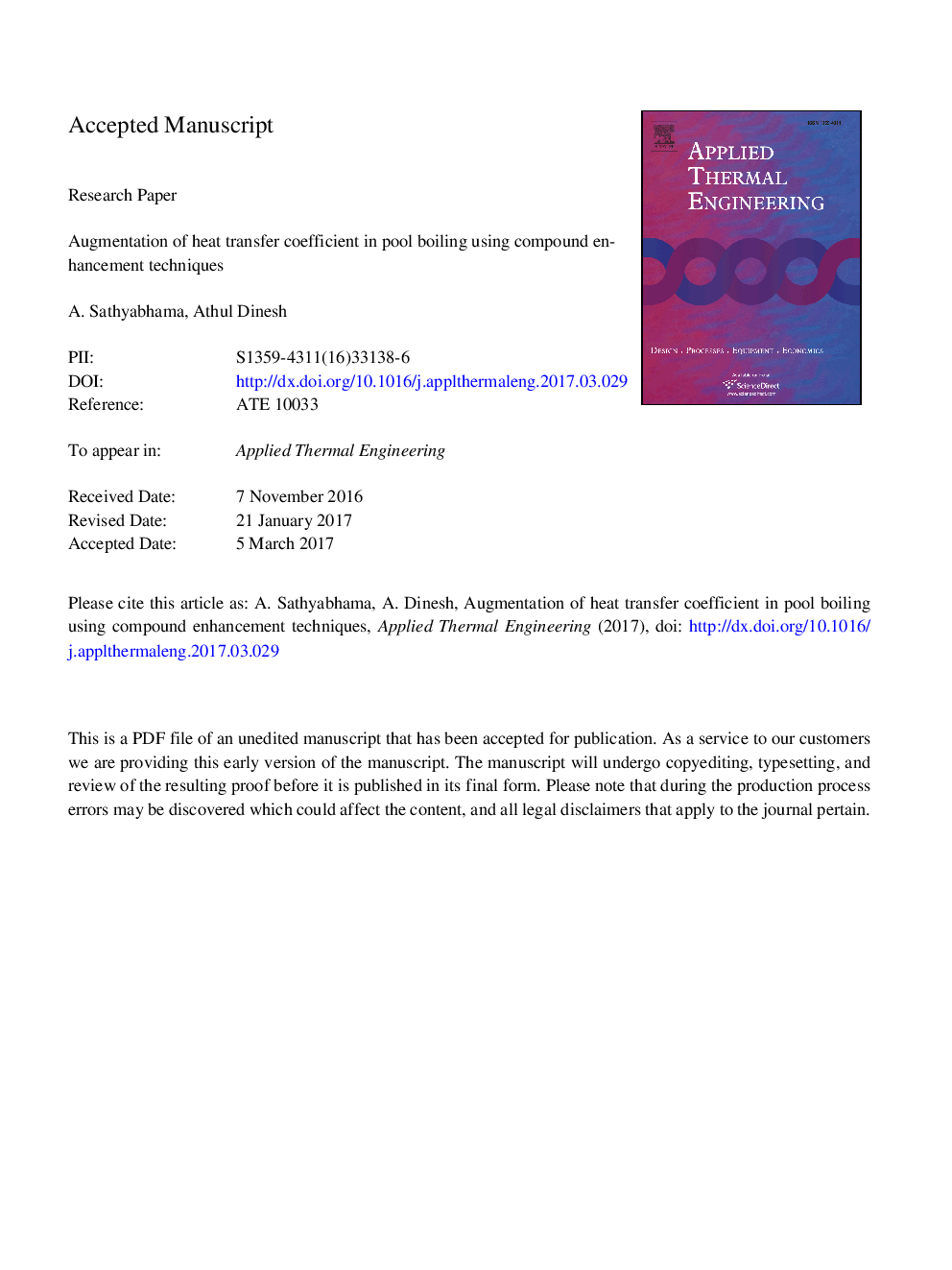| Article ID | Journal | Published Year | Pages | File Type |
|---|---|---|---|---|
| 4991279 | Applied Thermal Engineering | 2017 | 27 Pages |
Abstract
Modern compact electronic chip design demands more efficient and innovative cooling techniques in a limited space. One such method is the immersion cooling by pool boiling heat transfer, which is a highly efficient technique when compared with conventional cooling techniques. The boiling heat transfer coefficient can be enhanced using active and passive techniques. In the present investigation grooves as passive and surface vibration as active techniques were coupled to improve the boiling heat transfer coefficient. The forced vertical vibrations were induced on the copper grooved surface with a mechanical vibrator. The frequency of vibration was varied in the range 0-100 Hz and the amplitude of vibration was varied in the range 0-2.5 mm. The compound technique gave 62% improvement in heat transfer coefficient at 300 kW/m2 heat flux compared to the 29% enhancement due to grooves alone and 10% enhancement due to vibration alone. The experimental results were used to develop a modified Rohsenow correlation which predicts the experimental Nusselt number with an accuracy of ±25%. Boiling visualization was performed and the bubble parameters such as bubble departure diameter, bubble frequency and bubble growth were determined. The bubble departure diameter decreased by almost 36% and the bubble frequency increased by 221% for boiling on vibrated grooved surface.
Keywords
Related Topics
Physical Sciences and Engineering
Chemical Engineering
Fluid Flow and Transfer Processes
Authors
A. Sathyabhama, Athul Dinesh,
